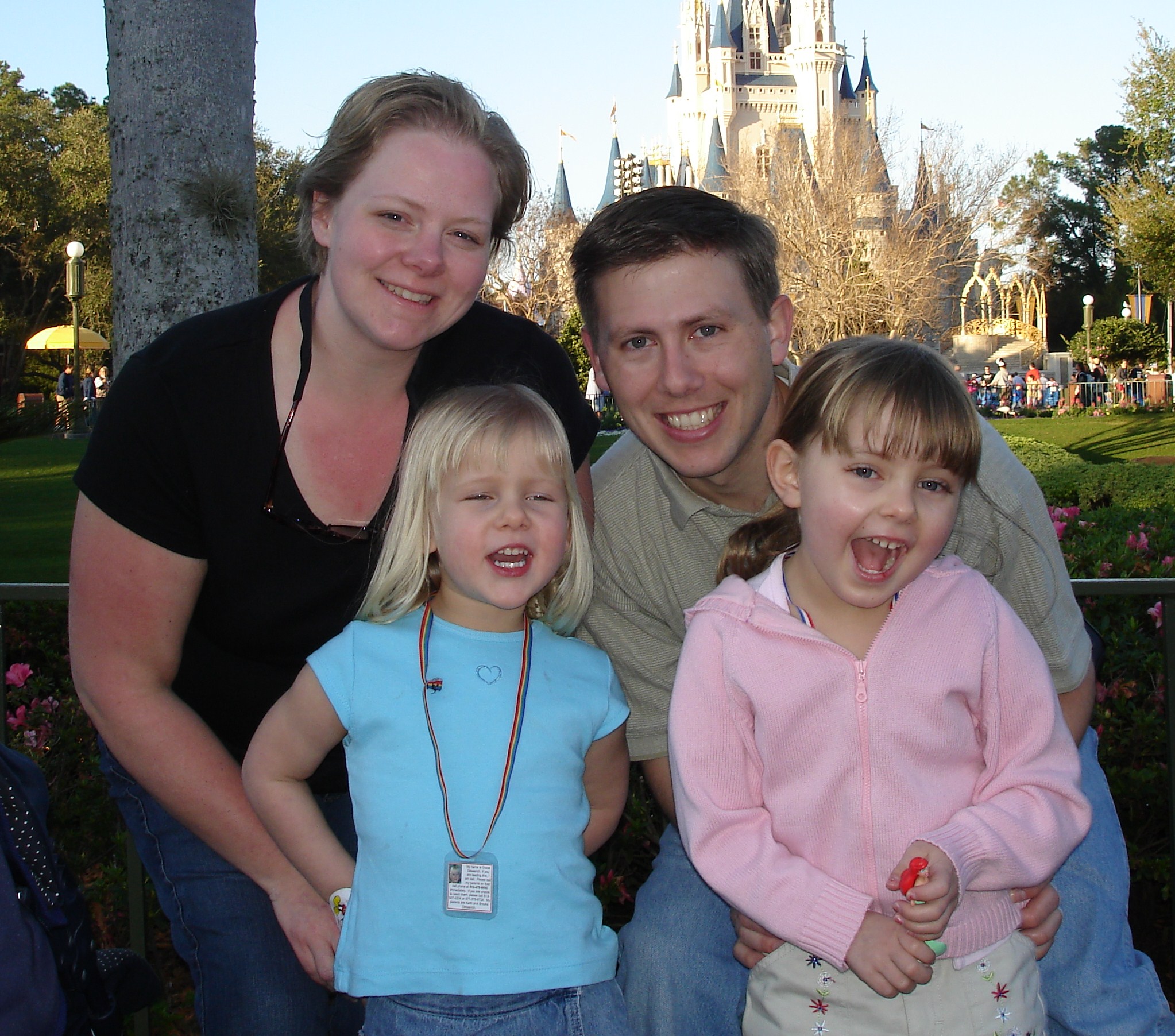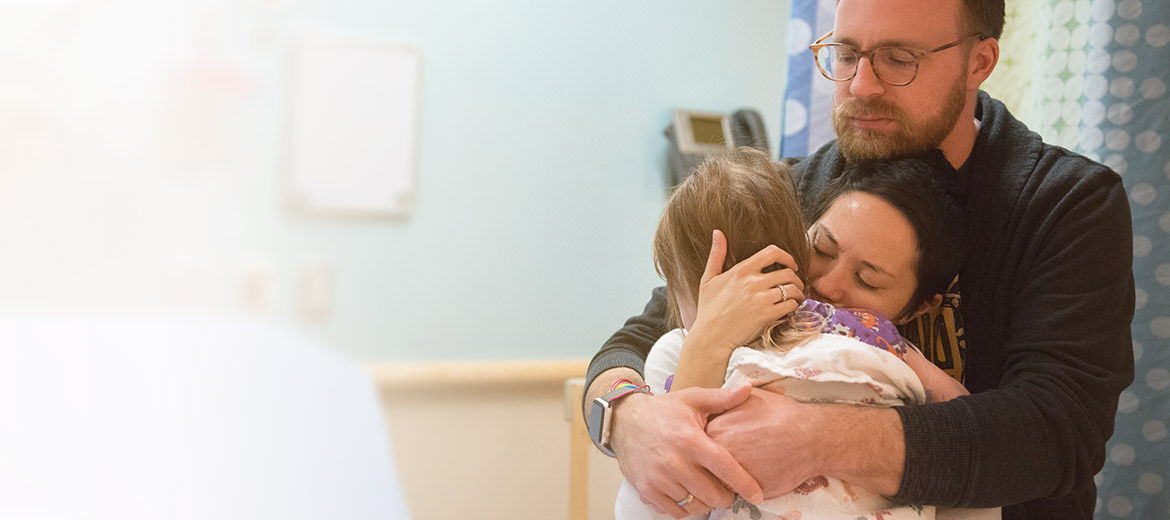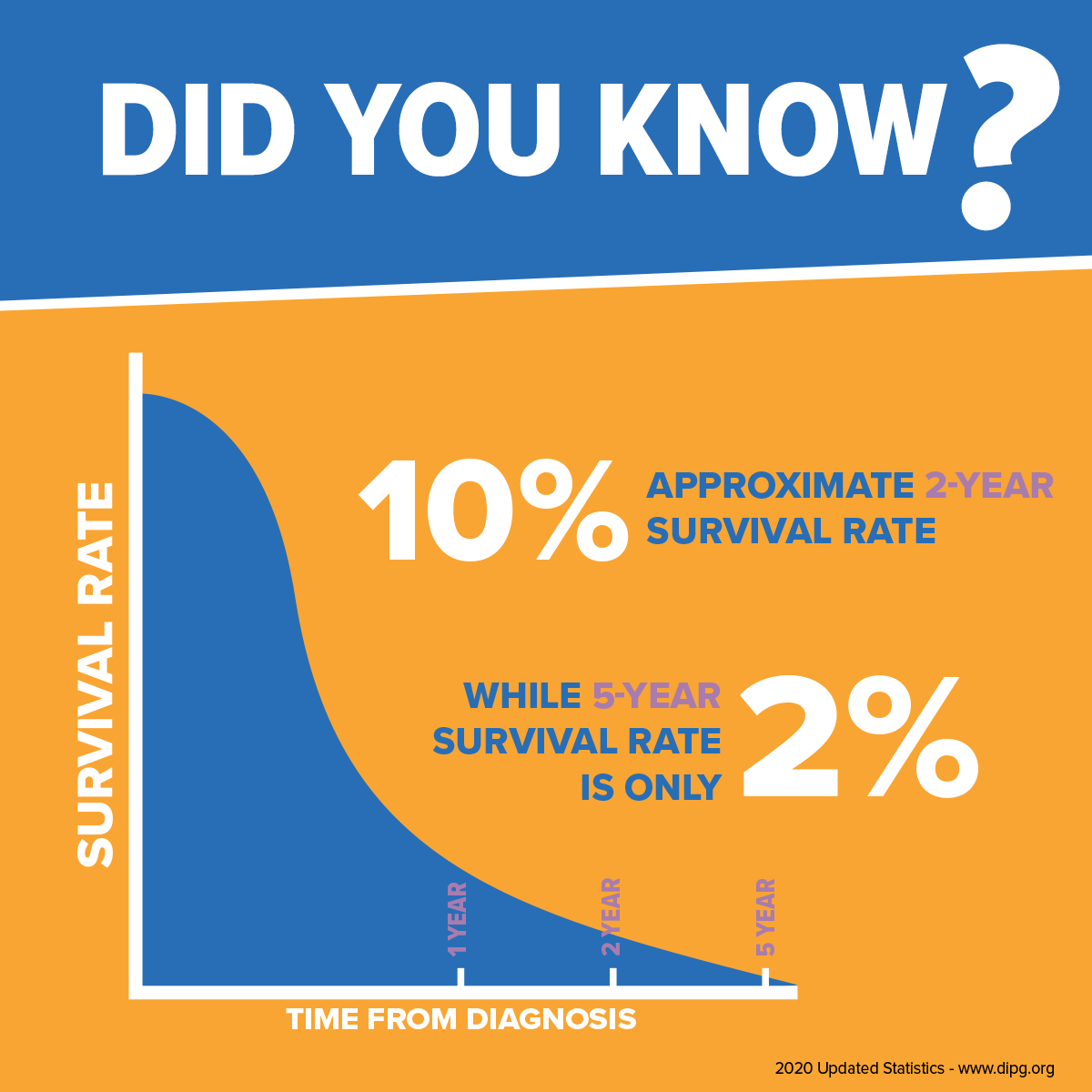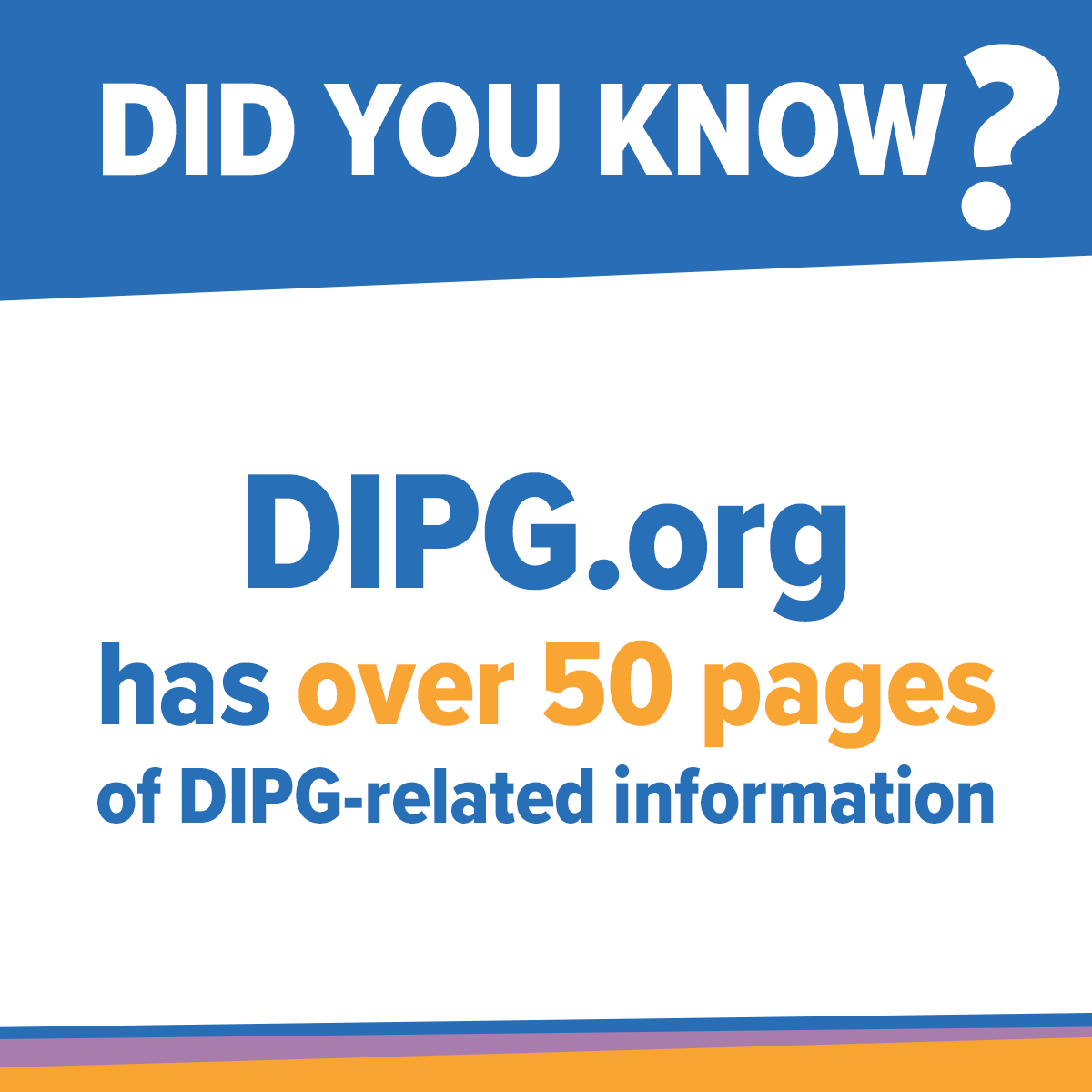When You're First Diagnosed With DIPG
Hello everybody. I'm Keith. I'm with The Cure Starts Now. I talked to you a little bit today about what to do when you're newly diagnosed. When you're first diagnosed with DIPG, sometimes it can be very daunting to figure out what's the next steps. At that point, you're pretty much grappling with obviously caring for your child, trying to be able to figure out what exactly has just happened. In many ways you're not ready for the next steps. And those steps are going to involve getting information, building a team, and really setting up for the care of your child. I want to talk about some of the practical things that you want to do in the very beginning of this process. I know it because as a father, we were in the same position. 13 years ago our daughter was diagnosed with DIPG and at the time people barely knew what it was named, let alone how to deal with it.

There were very little researchers out there and there was hardly no research that had ever been done on DIPG. So our goal in all of this was effectively to give you guys the tools that we never had. From this approach, both Brooke and I have worked to try to build up effectively a nice pathway to help parents so that in those beginning stages of it, you can quickly come up to speed, be able to care for your child and be able to really take the next steps. So let's talk the first thing that we're going to recommend if you are just diagnosed or your child is just diagnosed with DIPG, and that is information. Out there, you're going to get a lot of people sending you all kinds of information that can be, this is the cure to cancer, here's who you need to see, all this stuff.
DIPG.org
Unfortunately, a lot of that is bad information. So what we tried to put together is a website that holds all of the factual data. You can make your own conclusions. You can decide your own path, but it's not a Facebook group. It's not any of those types of groups that can be subject to rumors or to whims or to just the people that's on it. So if you go to dipg.org, and this also covers for DMGs as well, but dipg.org has the most factual information you are going to find on this subject that's even out there. It's written by doctors, it's written by caregivers, it's written by people that are in the know and have dealt with many cases, if not hundreds of cases of this before.
They're giving you practical information as to what are the various types of treatments, how immunotherapy interacts with this. Talks about radiation, it talks about side effects, it talks about chemotherapy options, what are trials, what is phase one, phase two, phase three. Basically, everything you could possibly ever want. We're literally talking just tens if not hundreds of pages of content that you can really dig in and get a lot of your questions answered in the very beginning of it. The second thing that we're going to suggest is to try to build yourself up a team. What we've looked to set up and when we started back in 2011 is a thing called the International DIPG Registry. It also is interconnected to the SIOPe Registry for the European Equivalent, but what the International Registry gives you is it gives you the ability to compare your case or your child's case of DIPG to all the other ones.
DIPG Registry
Now, let's talk about databases for a second. There are two things that we want to see in a database. Number one, we want to see that a database is linked. We want to see that when we go through the database, that we can track trends between all the various things. Just because I can maybe identify that, and let's use a fictional example, that maybe more males or females will get to DIPG, the next question is going to be, well, why? Well, if you don't have a link database, all that you're going to be able to see that one's higher than the other and you're never really going to know why. What a link database is, is a database that's created from the beginning. It's not taken from a protocol, it's not taken from a trial.
What it is, is it is a database where we just went out and said, let's ask every question we could possibly ever want and we're going to ask two patients that are diagnosed from beginning all the way to the end and be able to track all of the trends that we see with DIPG and DMG. And that's a very big point because a lot of the cancer databases out there, and that goes for any types of cancer, are not linked. So we're just collecting information in these small little buckets and we're not able to compare them to each other. What the DIPG registry does and what it's different, how it's different than any of the other type is that it compares not only the trends that we see, but then it takes the next steps and says, well, here's why it happened and here's why this has happened so we can really get to a better conclusion. What that delivers to you is it delivers you better care, better trials, better information for that.
The second thing that we need to consider about a database is that we're looking for trend data within the disease. There are registries that focus on brain cancers in general. That's okay, but that's not what we care about right now. What we care about is we care about comparing DIPG to itself. So what we want is we want a database that has huge numbers to provide a little statistical relevance. But what we're also looking for is something that compares just DIPG and DMGs. It doesn't compare it to a glioblastoma or it doesn't compare it to breast cancer or it doesn't compare it to any other types of diseases that may affect our bodies.
What we want is we want something that just compares within that because that's a better chance for us to get trend data. The DIPG registry, the International DIPG Registry is the largest by far. We're talking about a 1100 maybe 1200 different samples. Most other registries out there, number one, they're not linked and number two, they're lucky if they have 200 data sets of DIPG. So it really is the clear one. And you can get information about this by going to dipgregistry.org. It links together both that and also the European side of it. Keep in mind that this is just not for the United States either. It's Canada, it's Australia, and many other countries that go along with it and you can see all that at dipgregistry.org.
DMG
What it also does is it focuses, as we talked about before, as DMGs and also DIPGs. And that's important. We see a lot of commonalities between the two. So I don't really consider those to be outside of that comparison realm. For that reason, it's involved in, interestingly enough, one of the reasons that we now have the diagnosis of DMGs really came from the data and came from some of the trials that we funded and did in connection with what we did with the registry. So it started in that case. There's also a personal benefit to enrolling in the registry because by doing so, you're not just helping the community as a whole, but what you're able to do is you're able to actually get a little bit of a second opinion. So with doctors, when you agree to enroll in it, and you can either get through your hospital itself or just by going online, you can register yourself and it forces your hospital to communicate.
But what that does is that allows them to send the scans, the MRI data off to the International Registry and there are just a small group of people that review every single scan. That's important because when you're talking about looking at MRIs, it can be relative sometimes. So we want effectively two, maybe three people to review all the scans so that that way we can detect whether there's patterns and also advise if there's any situation that may be a misdiagnosis case. And that does happen. That's the reason why we want you guys to participate in it. It's there, it's free, it's a wonderful tool that we as parents built so that you would have some benefits to it being obviously just newly diagnosed.
Your Treatment Team
The next thing that you want to look at is you want to look at now your local team. You want to look at what hospital you're using, you want to look at what doctor you're using and sometimes that's a factor of where you're located. We get that. But typically we want to see hospitals that have maybe seven or more DIPG cases. Remember we're talking two to 300 patients in the entire United States just as an example.
A lot of hospitals typically won't get more than about 10 cases in a year.
If you have a hospital that's getting maybe seven cases or more per year, at least they have some understanding of it. Typically, they're already part of the International Registry. If they're not part of it, that's a pretty good indicator that they may not have enough cases. We want you to see that you're in a good center. Now you can get an idea of the good centers and we're not going to go out and say, this is good center and this is not. But you can look at for example, the DIPG registry and you can see which ones are contributing, which ones are open with their data, which ones are getting data also from the registry. Because the way the registry works is you contribute data, you get data and so those hospitals that tend to be more transparent in their focus and more open about it are typically learning more about DIPG, which helps you as well.
DIPG Consortium
The next step of that is to look at consortium's because that's going to really define maybe what trials you're going to be on. Typically, hospitals don't do trials by themselves. It's very expensive. They can't get enough patients to enroll on it to actually get any type of conclusions off of it. Because they may only see seven patients and they may need to be upwards of 20 to 30 to be able to get anywhere. So a lot of times they'll work in teams and there are some really dominant teams that are out there that are consortiums that we want you to be aware of. The first one is a consortium that's called a pediatric brain tumor consortium, PBTC. It is the cornerstone of most of the consortium's in our realm. It is the one that the NIH works through for the United States.
What PBTC does is it runs with, I think it's about 11 hospitals, maybe 12 hospitals, and they are the best pediatric brain tumor hospitals in the nation. They're selected. They actually have to compete to get that position and you will see that they'll have trials in there that will help out with DIPG, help out with other tumors as well. So any hospital that's part of that group, you can get the same care there as you would get from going to any other place. And you're really going to be in that top 11 or 12 hospitals in the United States, which is a great place to be.

Another consortium that we actually help build here too is Connect and you can find this at connectconsortium.org. What that is, is a clinical consortium, and what it's doing is, is it's actually taking some of the information that we're getting out of the registry and the trends and it's moving it very quickly, three times as fast, three times as many trials.
It's also an international consortium. If you're getting treatments or looking to get treatments in Europe or Australia or anywhere else, it's really the most widespread that we're dealing with for brain tumors and it's one that tends to have a little bit of a focus towards DIPG mainly because it was created in partnership with The Cure Starts Now as well. That's also a really, really good consortium in that. You have a couple of other consortiums that you can also consider that are out there. One is PNOC. PNOC is a consortium that was created about the same time for other organizations that were not able to participate in PBTC and they have some interesting studies that come out of that. There's also obviously COG, which is probably the biggest out there, Children's Oncology Group and what that does is that goes ahead and gives you a bunch of trials that deal with not just brain cancers but they can deal with everything out there.
Bottom line is, you want to look for a center that's in those consortiums, some of the dominant consortiums especially. If you're in that group, then you may not have to travel all over to be able to go ahead and get treatment. With any diagnosis, there's also extensive homework. You're going to feel like it's more than you can handle, more than you can keep up with. A lot of times people will cope with this by getting a binder and they'll keep all the protocols that they see and they'll print them off from virtualtrials.gov or anything like that and that can be helpful. Unfortunately, some of that data isn't updated as well as we would like it to be.
Staying Up-To-Date

Also, it requires quite a bit of interaction from you. I know when we were in the fight, we would have to go on all those websites, the governmental websites predominantly, and we would review those every single morning for the first hour, we'd print off everything, we'd highlight what it was. If there was a change of status, we would try to identify it because protocols do change status. They will open and they will close based upon the enrollment, based upon the successes and based upon whether moving from a phase one to phase two or phase three trials. So you need to be up to date.
Frankly, the more that you'll be up to date every single day is a good thing. That's a really big problem. So what we went ahead and created about a year and a half ago is a thing called DIPG Warrior. It makes it real easy for you. It's like a binder, but it's automated. What we did is we went ahead and created an app and once again, this is all free. This is why it's there. It's there to help you from one parent to another. You can go and you can download this app called DIPG Warrior. You do have to enroll because we want to make sure that we're dealing with just parents in the fight. We're trying to help you not necessarily have a bunch of folks that get in there and express opinions that may or may not be factual.
What makes the DIPG Warrior app really nice, is it's not only just obviously information, you can get access to videos, you can go ahead and learn all about DIPG and get up to speed with the most up to date stuff. But in here, and I'll show you this, I'll have to click on it though, because you may not be able to see everything with this. You can actually get a listing that is updated every single day of all of the trials. If you go through it, it gives it to you by geography based upon what zip code you're in. It goes ahead and list them out. If you click on them, it will actually give you the information, the abstract of it. It'll tell you what centers it's located at. It'll tell you the doctors. It'll tell you whether it's a phase one, a phase two. Effectively, everything you could want to know about the trial is right here. It's in your phone and you can simply pull it up. What's even better is that it will alert you. So if you have a trial and you express interest in a certain geographic region, you can define these fields. It'll actually come to you and tell you, "Hey, we found a new trial that you might want to consider." And sometimes they'll even pop up. As you can see here, see if I can get that showed up there. See the little flag that says new? That will tell you that this is a new trial you haven't seen before since you've been in the system before.
Obviously keep in mind, there's always going to be computer errors. This isn't always going to be a hundred percent accurate, but I will tell you this is a darn sight better than anything we ever had. It's a lot better than a binder that you're trying to print every single day. It will probably give you trials that you never knew about. In this given situation, I think we have a total of 37 trials right now and I would bet that a lot of people only know of probably about maybe six, maybe seven, maybe eight and that's just because there's just not wide of a net. We are giving you effectively the power of The Cure Starts Now to have a wider net, to have better options. Now granted, not all of these may be treatment protocols. Some of these may be just data collection type of trials, but we're not filtering it. We want to give it to you in a format that you can make an intelligent decision about it and really handle the care for your child that's in this fight against DMG or DIPG.
Apps aren't your thing? You can also get notified of new trials and status changes by enrolling into notifications at https://dipg.org/dipg-treatment/active-clinical-trials/
Don't Lose Hope
Last, and this is a point that I think is valid no matter what, and that is that hope is not lost. A lot of times when we talk to new families, and we do, any inquiries that come into The Cure Starts Now or DIPG, frankly, Brooke and I try to answer a lot of those personally because we want to give you the best information. We want to give you unfiltered information. And frankly, we've been with the DIPG/DMG community ever since the very beginning. A lot of this stuff we had a hand in creating, so we're trying to help out.
But we always remind people that hope is not lost. You see the stats, you see the Facebook beams, you see all this stuff where people go out and they tell you that there's a 0% chance of survival with DIPG. That's not correct. We know families that have survived this. Now, granted there is a question of what is survival because if you look at the NIH, they say two years in five years. Well, when we're talking about kids, five years just isn't enough. We all agree with that, but those are the numbers. That's the way that they calculate it currently. With that in mind, yes, there are survivors that fit in both of those groups, but there's also survivors that we've seen a long-term basis too.

The Cure Starts Now actually went to a very involved process to actually pull together a lot of those survivors that we knew from all these years and we brought them together in 2017 and we talked to them. We tried to see if there were trends, we tried to see if there was something that they did differently as a group. Unfortunately, there really wasn't any trends that we could really detect at that time. But, they are out there. Within DIPG, the true actual numbers that come from the registry, that come from 1100, 1200 which is by the way, the only place that we can really get statistics right now that are reliable. We have found out that we have about a 10% chance of survival at the two year mark and we have about a 2% chance of survival at the five year mark. But there are ways of dealing with this.
What we've also seen is just particularly in the last couple of years, the survival times have really started to grow.
We're seeing a difference in that research that we planted some 12, 13-years-ago, it's actually starting to come to fruition. When our daughter was diagnosed, they told us we had three months. Today we have kids that are typically going anywhere from 20 to maybe 24 months and who knows where we go from here? We have some children that are doing very, very well at those timelines too. So we may be dealing with a whole new crop of survivors and we love that. We want you to have that hope. We want you to have those options with it and so everything that we're doing is trying to build that.
Also, with stats and survival, there are some things that we've also started to see in children that tend to be marked as survivors, certain types of factors. And you can see this, just simply go to dipg.org and the latest greatest stats are there. We just put them up a couple of months ago and no one else has I guess even noticed them yet. But you can actually go there and you can pull it up and you can see the same thing. But key point, hope's not lost. There are things you can do. And really if you take these steps that I just talked about here, this is going to help you. This is going to give you that advantage that we didn't have and a lot of families still don't have today because they're not looking at the resources that are already out there.
If you have any questions, please let us know. If you liked this video, please, please, please help us by sharing it. Because when you share a video out like this, this gets out to other families. The goal of this is to make sure that they have the ways to be able to deal with this. That they have good tips to deal with it and that they can help their son or daughter as well. So please help us and get the word out there. Until later, we'll go ahead and close up here. If you have any questions, by all means, reach out us. Let us know. I'm Keith at The Care Starts Now and you can simply reach us at our website, thecurestartsnow.org. You can also look at all the information that we have up on dipg.org and use that as well. Thank you.
For additional information, please see "What to do after diagnosis"



